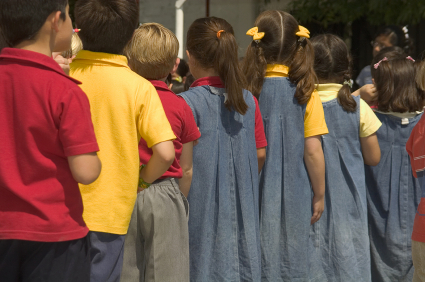
Autistic girls can present differently from autistic boys
October 23, 2023
Boys are currently four times more likely to be diagnosed with autism than girls, [1] as many girls seem better able to mask their autistic traits and challenges.
Autism spectrum disorder (ASD) is a collective term for a group of neurodevelopmental disorders characterised by persistent challenges in social communication and social interaction, and traits such as repetitive patterns of behaviour and restricted interests. The behavioural features that characterise ASD are often present before three years of age but may not become apparent until the school years or even adulthood. The developmental challenges, signs and characteristics of ASD can vary in nature and severity between individuals, and in the same individual in different contexts, and over time, and may be accompanied by mental health and/or physical health problems. [2]
Around 1 in 70 Australians are currently diagnosed with ASD. [3] [4] In recent years, the diagnosis of autism has increased. It is believed heightened awareness and access to diagnosis may have contributed to an increase in reporting rates.[5] However, boys are still four times more likely to be diagnosed than girls. [6]
Autism traits in girls
Autistic girls often have more mainstream interests and presentations than boys. Additionally, many girls seem to mask or camouflage their unique characteristics or challenges. The following may help teachers and others to identify girls who mask or camouflage autistic traits to better fit in with social expectations. [7] [8]
- Girls may suppress their autistic traits by faking a smile when feeling discomfort or by repressing their urge to stim. This can be emotionally and physically exhausting for the child, making it difficult to succeed academically.
- Many autistic girls are quite socially aware. Their understanding of their own social behaviour and knowing what’s generally expected in social situations can help them to ‘fit in’ reducing the likelihood of being identified as autistic.
- Many autistic girls can mirror the dress, conversational patterns and interests of female peers.
- Some autistic girls may avoid scrutiny, or remain on the periphery, by presenting themselves in a socially acceptable manner. For example, being a quiet, shy, ‘dreamer’. [9]
Each of these strategies can be emotionally exhausting. Children who mask or camouflage autistic traits may often ‘meltdown’ at home after containing themselves all day at school.
How might autistic girls present in the classroom?
The Psych4Schools ebooklet Working with children diagnosed with autism spectrum disorder (ASD) lists eight ways that autistic girls may present in the classroom and what teachers should look for. The list, on pages 11 and 12, can help teachers and others to identify girls who may be autistic and assist in the referral process. Psych4Schools members, or those who purchase the ebooklet, can access the list.
The ebooklet also provides references for those further interested in how autistic girls may present differently from autistic boys, and additional information to assist in supporting girls with autism.
Psych4Schools Members can Log in to access all resources, including the above ebooklet Working with children diagnosed with autism spectrum disorder (ASD).
Non-members can access an excerpt of the ebooklet, or can join now to access all Psych4Schools resources (1 year subscription) https://www.psych4schools.com.au/become-a-member/
Still thinking about subscribing? Check out our Free Resources or our Shop to purchase an ebooklet.
Best wishes for a productive Term 4.
Kind regards,
Murray
Murray Evely, Psych4Schools Psychologist/Guidance Officer
You can contact me via email at: info@psych4schools.com.au
References
[1] Steinbrenner, J. R., Hume, K., Odom, S. L., Morin, K. L., Nowell, S. W., Tomaszewski, B., Szendrey, S., McIntyre, N. S., Yücesoy-Özkan, S., & Savage, M. N. (2020). Evidence-based practices for children youth and young adults with autism. National clearinghouse on autism evidence and practice review team you and see Frank Porter Graham child development Institute https://elearning.psychology.org.au/apscustom/media/Autism/Module_4/Resources/Steinbrenner_et_al_2020_Evidence_based_practices.pdf
[2] Whitehouse, A, J, O, Evans, K, Eapen, V, Wray, J. A national guideline for the assessment and diagnosis of autism spectrum disorders in Australia. Summary and recommendations. Cooperative Research Centre for Living with Autism, Brisbane, 2018.
[3] Debunking Autism Treatment Myths Video, Jessica Paynter Griffith University
[4] Autism prevalence rate up by an estimated 40% to 1 in 70 people. Autism Spectrum Australia 11 July 2018, https://www.autismspectrum.org.au/news/autism-prevalence-rate-up-by-an-estimated-40-to-1-in-70-people-11-07-2018
[5] Australian Government. Autism in Australia (2017) Update https://www.aihw.gov.au/reports/disability/autism-in-australia/contents/autism
[6] Steinbrenner, J. R., Hume, K., Odom, S. L., Morin, K. L., Nowell, S. W., Tomaszewski, B., Szendrey, S., McIntyre, N. S., Yücesoy-Özkan, S., & Savage, M. N. (2020). Evidence-based practices for children, youth, and young adults with Autism. The University of North Carolina at Chapel Hill, Frank Porter Graham Child Development Institute, National Clearinghouse on Autism Evidence and Practice Review Team. https://elearning.psychology.org.au/apscustom/media/Autism/Module_4/Resources/Steinbrenner_et_al_2020_Evidence_based_practices.pdf
[7] Attwood, T., Grandin, T., Faherty, C., Mcllwee Myers, J., Snyder, R., Wagner, S., Wrobel, M, Iiand, L., Bolock, T (2019) Autism and Girls, Future Horizons
[8] Bulhak-Paterson, D., Ferguson, T., and Attwood, T., (2015) I am an Aspie Girl: A book for young girls with autism spectrum conditions. Jessica Kingsley Publishers
[9] Rudy, L.R., (2023) Autism in Girls: Signs, Symptoms and Underdiagnosis. Verywell health.
https://www.verywellhealth.com/signs-of-autism-in-girls-260304